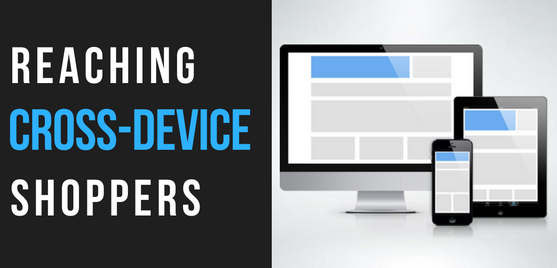Reaching Cross-Device Shoppers
In our blog, The Rise of Multi-Device Consumers, we discussed how it is becoming vital for businesses to deliver a consistent and seamless experience as shoppers move between devices. In the past, it was enough to focus on the “preferred” device or platform of shoppers. But, that is simply not the case today as 90% of consumers move between multiple devices in the purchase process (Google).
Focusing on one preferred device or platform is not nearly effective as implementing a cross-device strategy for your business. This also helps ensure you deliver the right message no matter when or where a potential customer stumbles across your product or service.
66% of consumers find it frustrating when content is not synchronized across all their devices (Adobe). They also engage with media content across screens for more than 60 hours per week (Nielsen). It isn’t enough to target markets with a one-size-fits-all marketing approach anymore. You need to develop a strategy for identifying tracking and targeting your shoppers at any given point.
To start, there are two main models for identifying a single person across multiple devices:
Deterministic models identify consumers through login events, purchases, or other processes where a user enters data identifying themselves. This method uses a stable identifier, like an email address, to match multiple devices to a single user. Deterministic models are usually more precise, but limited in scale.
Probabilistic models use billions of data points, including IP addresses, browsing patterns and device proximity, to infer that two or more devices are likely to belong to a single person. As the name implies, his method revolves around the probability there’s a match. Probabilistic models are more complex but much more scalable.
Using either one of these models allows you to maximize your chances of reaching and targeting potential shoppers in more places. The average shopper uses three to four devices in their daily life. So, if you’re only marketing to customers on desktop, you’re missing out on ample opportunities on mobile, tablet, and other connected devices.
Being able to capture the entire customer journey and relate it back to a single user helps your business truly understand what is working and what’s not. Today’s consumers don’t make purchase decisions in one instance, or on one device. This is why cross-device technology is becoming one of the most important tools for businesses (especially online). It can help your business tell a cohesive, seamless story to shoppers as they navigate across screens, and better attribute your customer’s final purchase to your marketing efforts. What’s more, this technology will influence how companies market and grow for the next fifty years.



